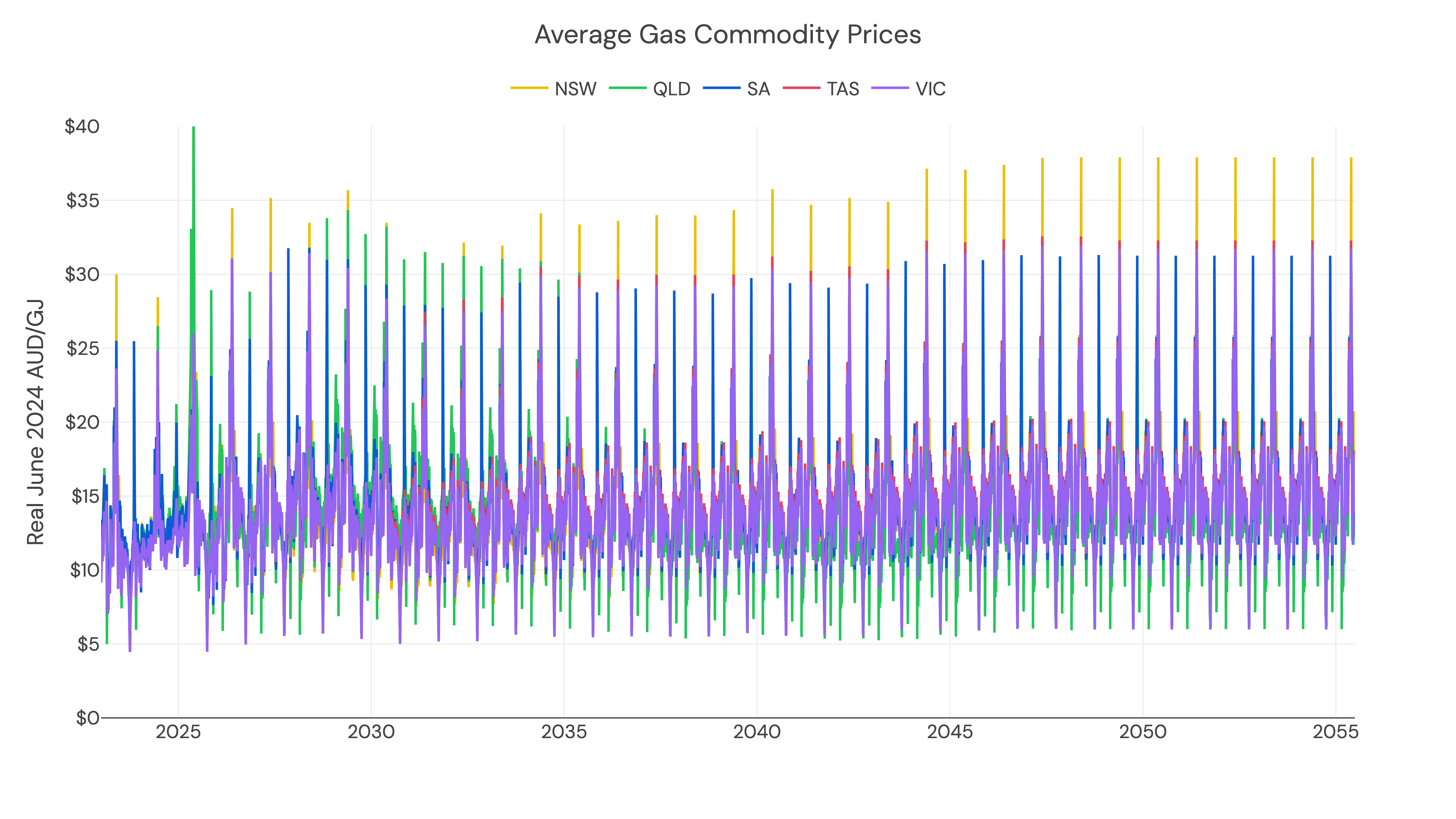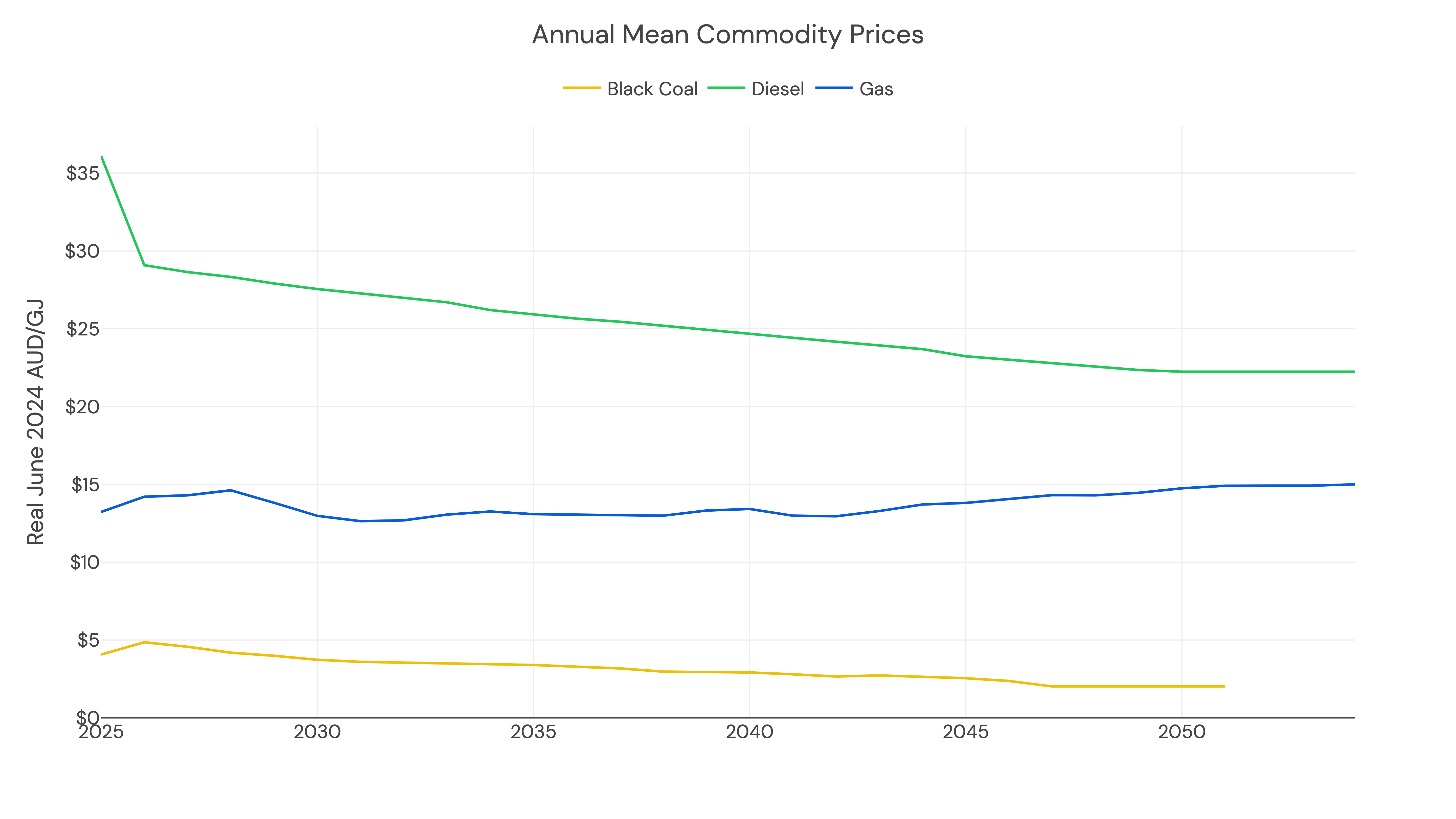Commodity Prices
How we model commodity prices
In order to simulate the bidding behaviour of each thermal generator, we first need to know fuel / commodity prices in order to calculate their short-run marginal costs (SRMC). Fuel prices do not just differ by fuel type (e.g. lignite, black coal, gas), they also differ from plant to plant due to the location of that plant and the cost to transport fuel to that plant. We therefore use separate fuel prices for each individual plant.
Data Sources and Temporal Coverage
We utilise a combination of historical data, market futures, and long-term projections to capture commodity price dynamics:
- Historical Prices: Sourced from AEMO’s Short Term Trading Market (STTM) and Declared Wholesale Gas Market (DWGM) for gas, and global coal price indices for coal.
- Market Futures: ASX energy futures contracts provide near-term price expectations for gas (e.g., Wallumbilla and Victorian hubs) and coal (e.g., Newcastle coal futures).
- Long-Term Projections: AEMO’s Integrated System Plan (ISP) offers annual, plant-level commodity price forecasts extending to 2050.
Currency and Inflation Adjustments
To ensure consistency, all commodity prices are converted to real July 2024 Australian dollars per gigajoule (AUD/GJ):
- Currency Conversion: Coal prices, typically quoted in USD per tonne, are converted to AUD using historical exchange rates from the Reserve Bank of Australia.
- Energy Content Adjustment: Coal prices are further converted from per tonne to per GJ using an average energy content factor (e.g., 25 GJ/tonne for black coal).
- Inflation Adjustment: Nominal prices are deflated to real July 2024 values using the Consumer Price Index (CPI) from the Australian Bureau of Statistics.
Seasonal Adjustment
To capture intra-annual price variability, seasonal adjustments are applied to the per-unit ISP commodity price forecasts:
- Historical Seasonality: Monthly patterns from historical commodity prices are analysed to determine typical seasonal fluctuations.
- Application to Forecasts: These seasonal factors are applied to the ISP’s annual forecasts to generate monthly price profiles that reflect expected seasonal trends.


Updated 3 months ago
